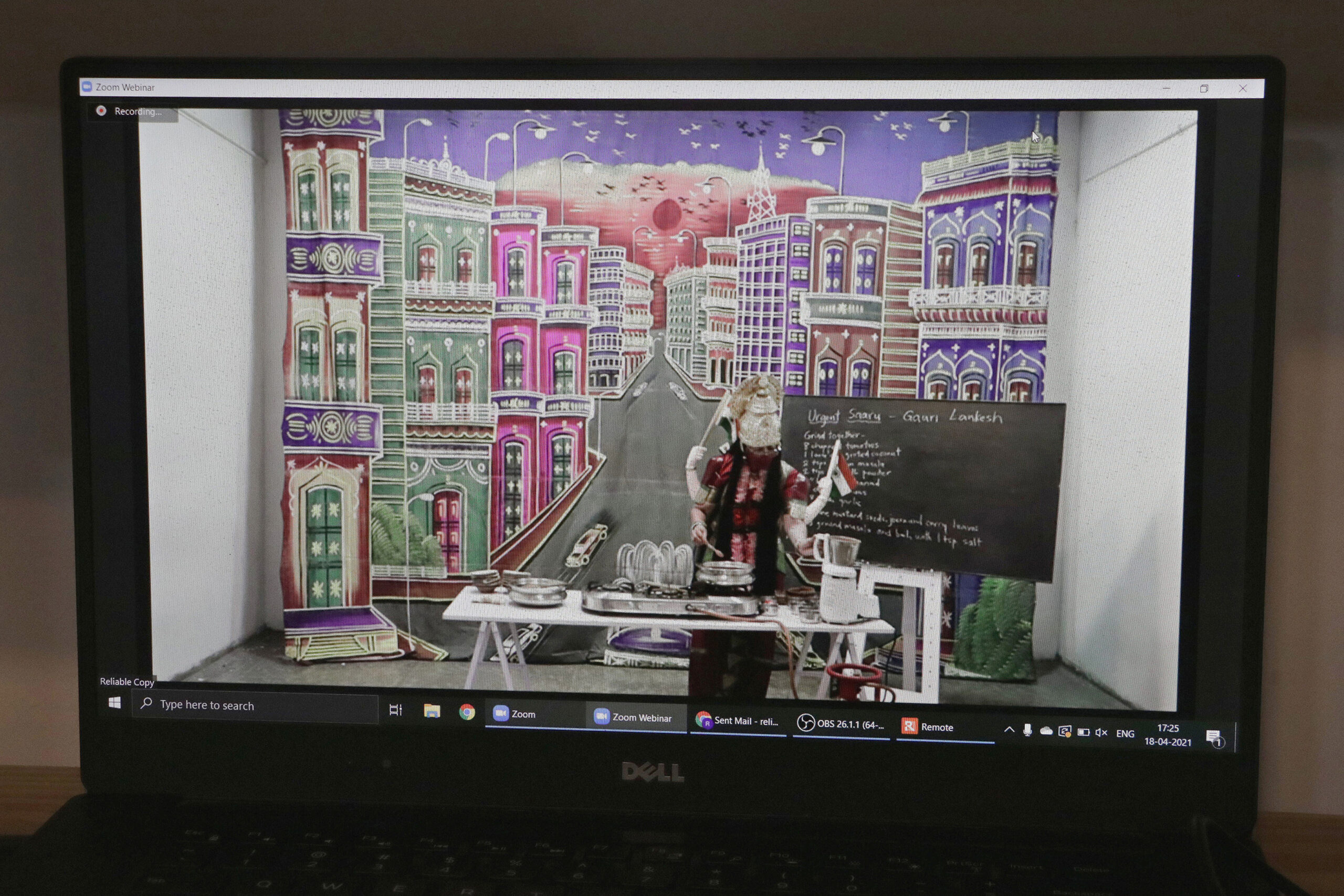MEETING OF TWO ICONS- Rajarshi Sengupta
This article was written as a result of visiting Lepakshi
festival (September 2012) in Leakshi, Hindupur district,
Andhra Pradesh. The event took place on occasion of an annual
religious festival there and also to spread public awareness
about the heritage site at the same time, where A.P. Tourism
promoted the site for future tourist attraction . Part of that two
day long “Offseason” festival, number of performances took
place in a ground adjacent to the Jawahar Navodaya Vidyalay.
On that occasion, a play was staged based on a fictional meeting
of three important characters from the History of Central-
South India. The first one is one of the most celebrated
kings of Vijayanagara Empire (14th-16th century A.D.),
Krishnadevaraya, then Movie actor turned politician N.T. Rama
Rao (NTR) and late chief minister of A.P. Y.S. Rajasekhara
Reddy (YSR). It was interesting to see the contemporary take
on the King, his visual representation on stage, inspired largely
from the legendary Telugu movie “Mahamantri Timmarusu”
and similar other movies from 1960’s, that too in a site where
perhaps the best preserved Vijayanagara murals are existing. It
was indeed an opportunity to observe how memories of the royal
past are constructed in public memory, which indicates the nature
of memory construction; a continuous process, drawing reference
from immediate to build the past.
 Lepakshi, a small village in Southern Andhra Pradesh preserves
Lepakshi, a small village in Southern Andhra Pradesh preserves
evidences of the art of VIjayanagara period, especially of the early
16th century. Ceiling murals from the famed Veerbhadraswamy
temple represents the lifestyle of the era, which developed due
to cross-cultural interaction at a macro Asian level involving
Southern India, South East Asia, and the Middle East. For the
scholars working on the visual culture of this era, as Anna L.
Dallapiccolla, Anila Vergheese and D. Hanumantha Rao to name
a few, paintings and reliefs depicting costume of that period from
the temple served as a major source in understanding the effect
of cultural interaction. King Krishnadevaraya, from the history
of that empire, is also identified with specific Islamic influenced
costume, who is elevated as an icon for his intelligence, political
power, and contribution in the field of art.

